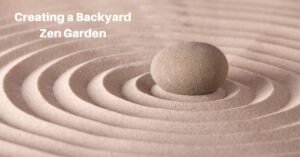Watering the lawn and garden is a must-do! But standing around with a hose in your hand is boring, tiring, and imprecise. That’s where a sprinkler comes in handy! But there are so many options. What makes them unique, and which is best for your area?
Let’s look at eight types of sprinkler and how they can serve you best!
Kinds Of Sprinkler And The Lawns They Work Best For
In-ground
This is the most convenient type of sprinkler system. You don’t have to worry about pulling it out every time you need to water.
In-ground sprinklers connect to your water supply. The sprinkler heads pop out of the ground when it’s time to water the lawn.
Most modern systems are automated to run at certain times of the day or week.
This system requires the most initial investment and if something breaks, you may have to dig it up to fix it. Also, if you live in an area where the temperature drops below freezing in winter, you have to drain the sprinkler system so water doesn’t freeze in the pipes.
However, it’s a huge time-saver and saves you a lot of hassle! Automated systems are also more precise and always provide the same amount of water.
Learn how to install your in-ground lawn sprinkler system!
Bubbler Sprinkler Heads
Bubblers are normally part of a larger sprinkler system. They are designed for a concentrated water flow over a precise area. The water pours out of them instead of spraying.
They’re great for plants or areas that have special needs. For example, you could use one around the best of a large tree to make sure the root system is getting enough water. Otherwise, the foliage and trunk could block water from getting water to parts of the roots.
Traveling sprinklers
Let’s take the show on the road! A traveling sprinkler doesn’t go too far – just far enough to get the lawn well-water.
These are great if your lawn is an odd shape and you need to be sure to cover every odd corner.
They are small wheeled “vehicles” powered by water pressure! You lay out your hose in the pattern you want the sprinkler to follow then turn on the water and let it do its thing! It will slowly follow the hose’s path and provide a great soaking to the entire area.
Of course, you need sufficient water pressure for this, but not too high, either. Thirty to sixty PSI works great for most traveling sprinklers.
Stationary (fixed)
A stationary sprinkler sends water in a single direction. That’s ideal if you have a small area or a section of lawn that’s hard to reach or a small garden bed.
These are the simplest sprinklers. There are no moving parts
Oscillating
The oscillating sprinkler is what we used to run and jump through as kids. It attaches to the end of a hose and has a metal bar with holes in it. The bar oscillates back and forth, providing a gentle spray across the lawn.
This works great for medium or large lawns. It’s also lightweight and easy to move to another part of the yard. However, it doesn’t work well on windy days, since the spray is relatively fine and can easily get blown out of the area you wanted to water.
Impulse Sprinklers
When you think of sprinklers, does any particular sound come to mind? That tch-tch-tch-tch most likely means there’s an impulse sprinkler nearby!
These sprinklers shoot out a stream of water as they slowly turn. The water jet can cover a nice distance, making them ideal for large areas. Also, since the water sprays in such a concentrated “beam”, it doesn’t get blown about so much by the wind. Don’t worry, though; by the time it reaches the ground, it’s dispersed enough that it won’t leave pock marks or mini-rivers across the lawn.
We recommend these for bigger areas like front and backyards.
Rotating
Rotating sprinklers are another type we were familiar with as children. Most have two arms attached to a base. The arms have holes that the water shoots out of, and the water pressure makes them spin in a circle.
They provide an even watering to a large or medium-sized lawn.
Sprinkler Hoses
A sprinkler hose is simply a hose with holes in it. Of course, you may have a few of these around that weren’t originally “sprinkler hoses.” The ones you buy, though, evenly space the holes so you can evenly water an entire area.
If you have a strip of grass or a long and narrow flower bed, this can be a great choice. Just spread it over the area and let the water run. It will help water the narrow area on either side of the hose.
Conclusion
A sprinkler system saves you time and work, but also provides a more consistent watering to your garden than trying to water manually. There are so many varieties, though, so be sure to consider what type you need before looking into specific models. You – and your lawn and garden – will appreciate the purchase!








